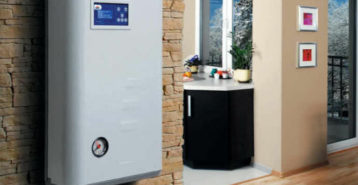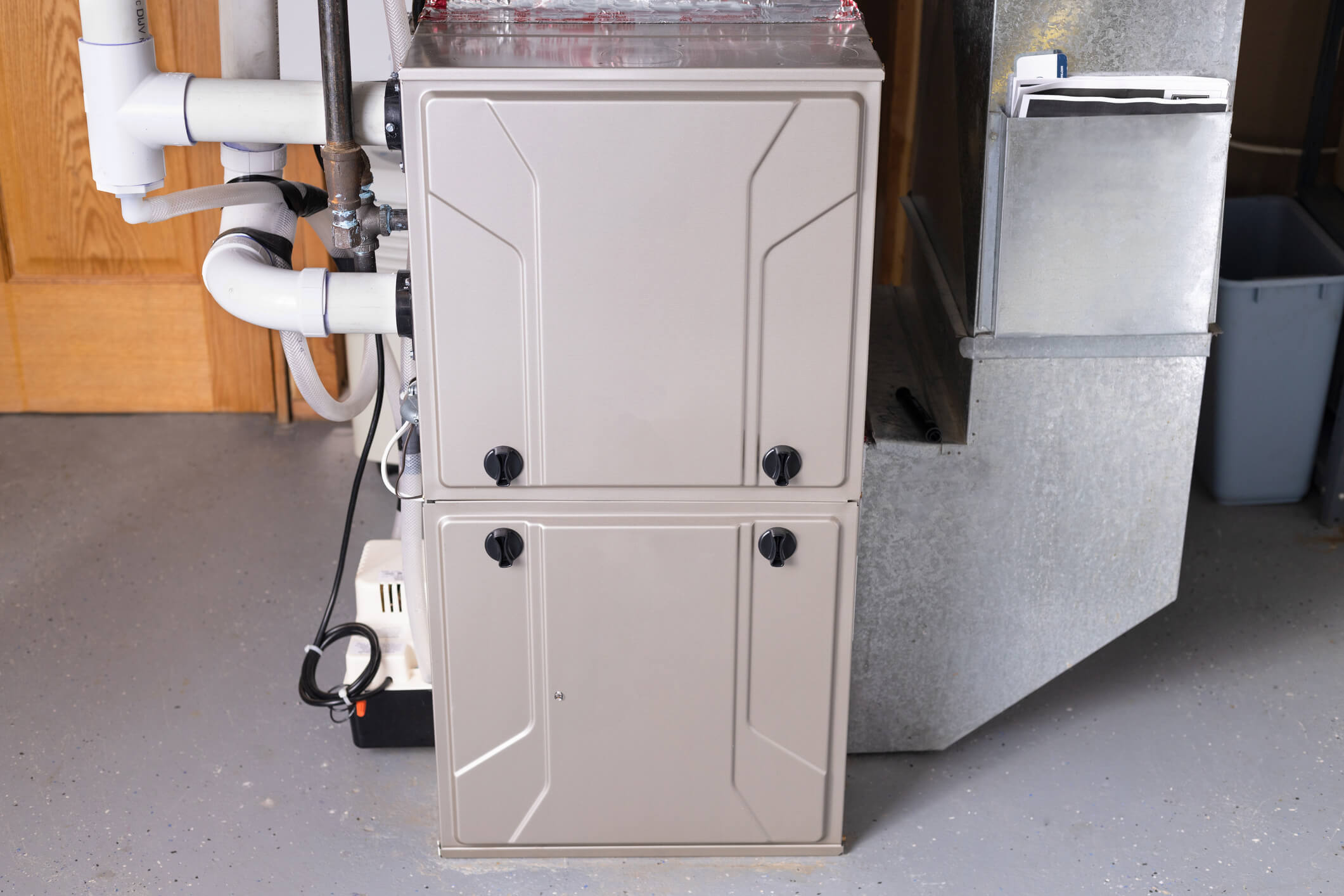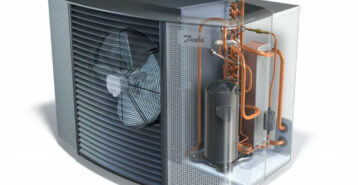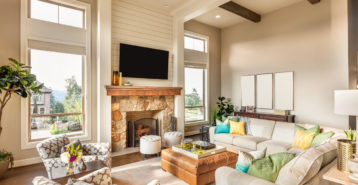What Are Radiators?
Radiators move heat from hot water or steam into the surrounding air to warm a room. Many older, vintage, and historic homes use a boiler-and-radiator setup, and newer systems can be highly efficient. Because installation and repair involve plumbing, controls, and safety checks, hire a licensed contractor for any major work.
How Much Does Radiator Installation and Repair Cost?
Your HVAC installation price depends on the radiator type, size and output, finishes, and how much plumbing or control work is needed. The prices below reflect typical, mid-range projects.
| Item | Typical Cost | What’s Included |
|---|---|---|
| Install a new radiator (per unit) | $500 to $2,500 | Mounting, connections, testing; added cost for re-piping or relocation |
| Repair an existing radiator | $150 to $600 | Common fixes like leaks, valve replacements, or bleeding air |
| Thermostatic radiator valve (TRV) | $75 to $300 each | Adds room-by-room temperature control |
| Delivery and disposal | $50 to $300 | Heavier units may require special handling |
Typical Costs by Radiator Type
Use this at-a-glance table to compare common options and plan your budget.
| Radiator Type | Typical Installed Cost (Per Unit) | Notes |
|---|---|---|
| Baseboard (electric or hydronic) | $400 to $1,070 | Compact, low-profile perimeter heat |
| Panel (hydronic) | $300 to $1,500 | Slim, modern look; vertical or horizontal |
| Column (hydronic) | $400 to $2,500 | Classic style; wide size range |
| Cast iron (steam or hot water) | $500 to $3,000 | Heavy, durable, slow-and-steady warmth |
What Drives Radiator Costs
Several choices have the biggest impact on your total investment. Ask for a line-item quote so you can compare equipment, labor, accessories, and a reasonable contingency for heating installation.
- Type and Output: Larger units and higher British thermal unit (BTU) ratings cost more.
- New vs. Refurbished: Refurbished units offer upfront savings, but they may need prep or repainting.
- Installation Complexity: Re-piping, relocating, or adding thermostatic radiator valves (TRVs) raises labor.
- Boiler and System Condition: Old valves, air vents, or controls may need upgrades.
- Finish and Style: Decorative designs and custom powder coats add cost.
- Access and Layout: Tight spaces, wall repairs, or tricky runs extend install time.
Step-by-Step Radiator Installation and Repair Process
A quality HVAC installation follows a clear sequence to ensure performance and safety.
- Pre-Installation Inspection: Assess boiler capacity, system type (steam or hot water), and existing piping.
- Sizing and Placement: Match output to the room and place units under windows or on exterior walls for best comfort.
- Mounting: Level and secure brackets or feet. Confirm clearances for airflow.
- Connections: Tie into supply and return lines (for hydronic options) or steam risers. Add valves, vents, and controls.
- Testing and Balancing: Fill or pressurize, bleed air, check for leaks, and confirm thermostat operation.
- Homeowner Walkthrough: Review safe clearances, cleaning, and basic maintenance.
Always hire a licensed contractor to meet local codes and manufacturer requirements.
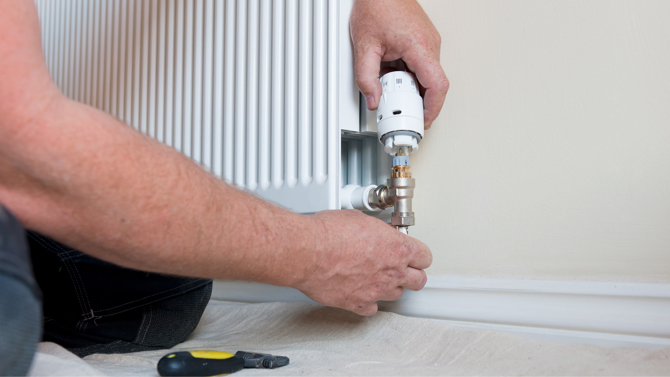
Radiator Types
Radiator choice affects comfort, look, and cost. Use these summaries to compare options for your home.
Baseboard Radiators
- Best For: Bedrooms, hallways, and additions where wall space is limited.
- Why Homeowners Choose Them: Low profile, quiet, and easy zoning.
- Installation Tips: Keep furniture and drapes away to maintain airflow along the fins.
» Read our baseboard radiator buying guide.
Cast-Iron Radiators
- Best For: Steady, lasting warmth and period-correct style.
- Why Homeowners Choose Them: Durable, quiet, and forgiving during temperature swings.
- Installation Notes: Heavy — secure anchoring and professional handling required.
» Read our cast-iron radiator buying guide.
Column Radiators
- Best For: Classic look with flexible sizing and output.
- Why Homeowners Choose Them: Many heights, widths, and finishes; strong convection.
- Install Tips: Leave space around columns for airflow and easier cleaning.
» Read our column radiator buying guide.
Panel Radiators
- Best For: Modern, slim profiles in tight spaces; vertical or horizontal layouts.
- Why Homeowners Choose Them: Clean look, quick response, optional towel-warmer styles.
- Installation Notes: Add TRVs for room-by-room control.
» Read our panel radiator buying guide.
Pros and Cons of Radiator Heat
Radiators can be efficient and comfortable, but they are not right for every home. The table below compares radiators to other common home heating systems.
| Feature | Radiators (Hydronic) | Furnace (Gas) | Heat Pump (Ducted/Ductless) |
|---|---|---|---|
| Upfront cost | Low to high (varies by type) | Moderate | Moderate to high |
| Operating cost | Low to moderate (with efficient boiler) | Moderate | Low to moderate |
| Comfort feel | Quiet, even, room-zoned warmth | Fast whole-home heat, can be drafty | Heating and cooling, even comfort |
| Ductwork needed | No | Yes | Optional (ductless) |
| Best use | Hydronic homes, retrofits, zoning | Homes with existing ducts | Energy-conscious homes, mild to cold climates |
Pros
- Quiet, Even Heat: No blower — just steady warmth.
- Zoned Comfort: Heat occupied rooms and save elsewhere.
- Duct-Free: Ideal where adding ducts would be costly or disruptive.
- Design Options: From slim panels to classic cast iron.
Cons
- Clearance Needed: Blocking with furniture or drapes reduces performance.
- Weight and Handling: Some models are heavy and need secure mounting.
- Aesthetics Vary: Not everyone wants visible radiators on walls or floors.
How Do Radiators Work?
Radiators warm rooms through convection and a small amount of radiation. Hot water or steam flows through the unit, heating the metal. Warm air rises from the radiator, cooler air moves in at the bottom, and the natural cycle continues until the room reaches the set temperature.
- Radiation: Heat radiates from the warm surface into the room.
- Convection: Heated air rises while cooler air is drawn in below, creating a gentle circulation loop.
Radiator and Boiler Maintenance
- Placement: Keep several inches clear on all sides. Avoid covering with curtains or blocking with furniture.
- Cleaning: Dust and wipe fins or panels regularly so heat can transfer freely.
- Annual Checkup: A pro should inspect valves, vents, water quality, boiler operation, and controls once a year.
Finding Local Radiator Installers
Get at least three written quotes. Verify license and insurance, read recent reviews, and make sure proposals include labor, materials, valves and controls, delivery, haul-away, warranties, and an after-service plan.
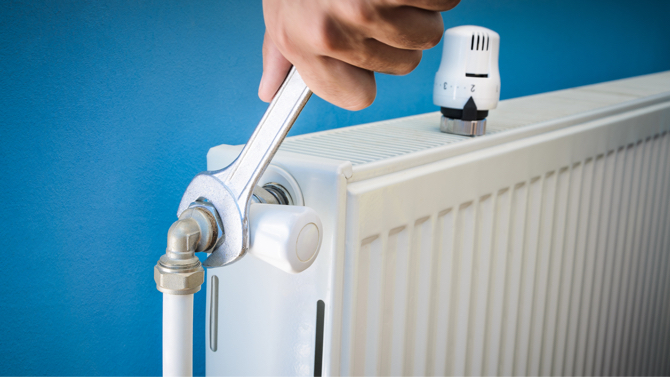
Radiator FAQs
These common questions help set expectations on price, scope, and long-term value.
How much does it cost for someone to install a radiator?
Typical installs run $500 to $2,500 per radiator, depending on type, size and output, finishes, and plumbing or control work. Complex projects cost more.
What is the average price to install a radiator?
Many homeowners land near the middle of the range for a standard, single-room install. Your exact price depends on the unit you choose and the condition of your existing system.
How much do radiators cost to repair?
Most common repairs cost $150 to $600, including leak fixes, valve replacements, and bleeding trapped air. Major re-piping or control upgrades can increase costs.
Is it cheaper to replace or repair a radiator?
Minor issues are usually cost-effective to repair. Replacement makes sense if the unit is badly corroded, repeatedly leaking, undersized for the room, or you are upgrading finishes and controls as part of a larger project. Ask for both repair and replace quotes to compare long-term value.
Next Steps
Radiators can deliver quiet, efficient comfort — especially with the right sizing, placement, and professional installation. If you are updating one room or planning a full system refresh, gather a few quotes to compare scope, line-item costs, and warranties. We can help you connect with vetted local pros so you can move forward with confidence.
Compare top-rated HVAC pros in your area.
Read real homeowner reviews, explore qualifications, and view promotions. Modernize makes it easy to browse professionals and find one that will be perfect for your project.




